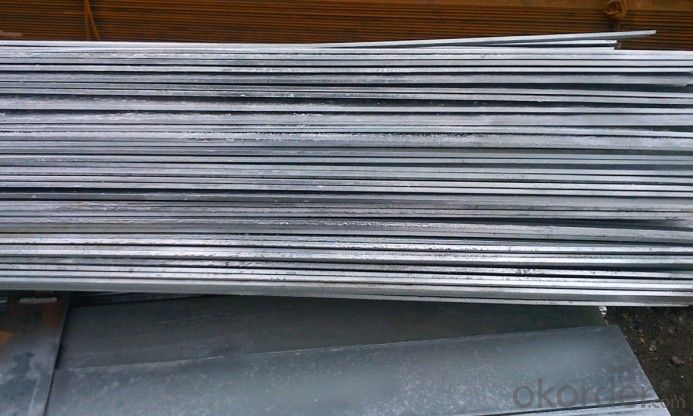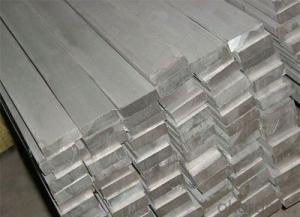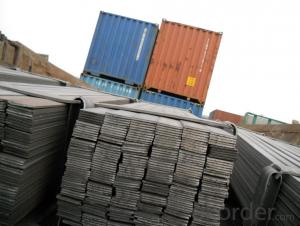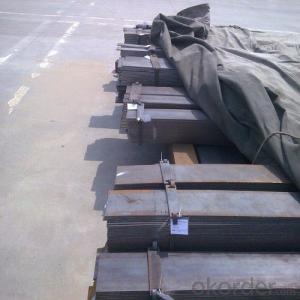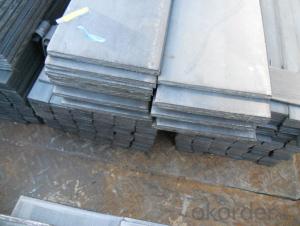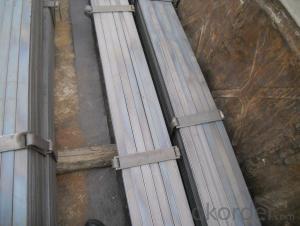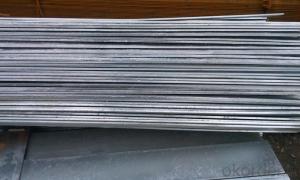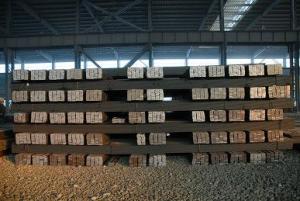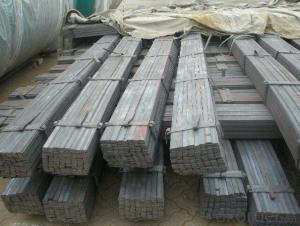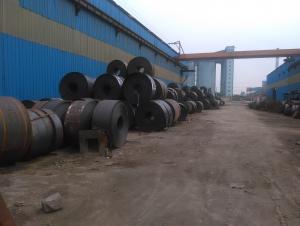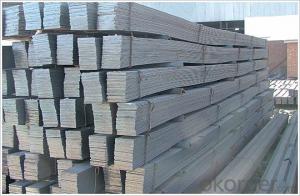Hot rolled flat bar; flat steel
- Loading Port:
- Tianjin
- Payment Terms:
- TT OR LC
- Min Order Qty:
- 50 m.t.
- Supply Capability:
- 10000 m.t./month
OKorder Service Pledge
OKorder Financial Service
You Might Also Like
Specifications of MS Channel:
1.We supply high quality MS Channel at reasonable price, including Chinese standard, Japanese standard and so on.
Standard | GB/JIS |
Material Grade | Q235,SS400 |
Technique: | Hot Rolled |
Sizes as per chinese standard: | 50*37*4.5mm - 300*89*11.5mm |
Sizes as per japanese standard: | 50*25*3mm – 200*80*7.5mm |
Length: | 6meter, 9meter, 12meter |
Note: 1.we are also competent to provide our customers other MS Channel based on other sizes according to customer’s requirements.
2. The length of our ms channel could be cut into other meters as per customer’s requirements. For example, the channel in 6meters could be cut into 5.8meters in order to be fit in the 20ft container.
2. The detailed sections of MS Channel as per GB standard.are shown in the table-1:
GB U CHANNEL | Standard | Sectional | Dimension |
| Mass: |
(mm) | (mm) | (mm) | (mm) | ||
50X37 | 50 | 37 | 4.50 | 7.0 | 5.438 |
63X40 | 63 | 40 | 4.80 | 7.5 | 6.634 |
80x43 | 80 | 43 | 5.00 | 8.0 | 8.045 |
100x48 | 100 | 48 | 5.30 | 8.5 | 10.007 |
120x53 | 120 | 53 | 5.50 | 9.0 | 12.059 |
140x58 | 140 | 58 | 6.00 | 9.5 | 14.535 |
140x60 | 140 | 60 | 8.00 | 9.5 | 16.733 |
160x63 | 160 | 63 | 6.50 | 10.0 | 17.240 |
160x65 | 160 | 65 | 8.50 | 10.0 | 19.752 |
180x68 | 180 | 68 | 7.00 | 10.5 | 20.174 |
180x70 | 180 | 70 | 9.00 | 10.5 | 23.000 |
200x73 | 200 | 73 | 7.00 | 11.0 | 22.637 |
200x75 | 200 | 75 | 9.00 | 11.0 | 25.777 |
220x77 | 220 | 77 | 7.00 | 11.5 | 24.999 |
220x79 | 220 | 79 | 9.00 | 11.5 | 28.453 |
250x78 | 250 | 78 | 7.00 | 12.0 | 27.410 |
250x80 | 250 | 80 | 9.00 | 12.0 | 31.335 |
250x82 | 250 | 82 | 11.00 | 12.0 | 35.260 |
280x82 | 280 | 82 | 7.50 | 12.5 | 31.427 |
280x84 | 280 | 84 | 9.50 | 12.5 | 35.823 |
280x86 | 280 | 86 | 11.50 | 12.5 | 40.219 |
300x85 | 300 | 85 | 7.50 | 13.5 | 34.463 |
300x87 | 300 | 87 | 9.50 | 13.5 | 39.173 |
300x89 | 300 | 89 | 11.50 | 13.5 | 43.883 |
Table-1
3. The chemical composition of HR Channel Steel according to Q235B is shown in Table-2.
Alloy No | Grade | Element(%) | ||||
C | Mn | S | P | Si | ||
Q235 | B | 0.12-0.20 | 0.3-0.7 | ≦0.045 | ≦0.045 | ≦0.3 |
Table-2
Note: we are able to present our customers relevant SGS test report for chemical composition of HR Channel Steel.
4. The mechanical property of HR Channel Steel according to Q235B is shown in Table-3-1 and Table-3-2
Alloy No | Grade | Yielding Strength Point(Mpa) | |||
Thickness(mm) | |||||
≦16 | >16-40 | >40-60 | >60-100 | ||
≧ | |||||
Q235 | B | 235 | 225 | 215 | 205 |
Table-3-1
Alloy No | Grade | Tensile Strength(Mpa) | Elongation After Fracture(%) | |||
Thickness(mm) | ||||||
≦16 | >16-40 | >40-60 | >60-100 | |||
≧ | ||||||
G235 | B | 375-500 | 26 | 25 | 24 | 23 |
Table-3-2
Note: we are able to present our customers relevant SGS test report for mechanical property of MS Channel as customer’s request.
Applications of MS Channel:
The MS Channel can be applied to construction of warehouses, workshops, sport stadiums and car parks etc.The hot rolled channel steel belongs to carbon structural steel which is applied to in the field of construction and machinery.In details, the hot rolled channel steel is usually used for arch-itechtural structure, and they could be welded in order to support or hang a vari-ety of facilities. They are also usually used in combination with I beam. Generally,the hot rolled channel steel we supply must possess perfect welding property, riveting property and mechanical property and so on.
Package & Delivery of MS Channel:
1.The hot rolled channel steel will be packed in bundle with steel wire at each end of every bundle and color marking in order to help the customer to recognize his goods more easily at sight.
2. And the hot rolled channel steel could be loaded into 20ft or 40ft container, or by bulk cargo.If the weight of each bundle reaches more than 3.5 mt, the loading by break bulk cargo should be choosed.When the weight of each bundle reaches less than 3mt, the loading by container should be choosed.
3.As for the transportaion from mill to loading port, the truck will be usually used. And the maximum quantity for each truck is 40mt.
4.All in all, we could do in accordance with customer's request
- Q: What is the difference between 60X6 and 50X4 flat steel in grounding?
- There are differences, mainly based on the local geological conditions, the purpose is to meet the requirements of grounding resistance.
- Q: What is the rolling range of the micro cold rolled flat steel production line?
- Flat steel, width 12-300mm, thickness 4-60mm, cross section is rectangular and with pure edge of steel. Flat steel can be finished steel, or can be used as the blank of welded pipe and thin slab for laminated sheet rolling. Section steel is one of the four major steel products (plate, tube, mould, wire). According to the section shape, the section steel is divided into simple section steel and complex section steel (deformed steel). The former refers to the steel, round steel, flat steel, angle steel, six angle steel; the latter refers to the I-beam, channel steel, steel, steel, steel frame bending etc..
- Q: How do you join steel flat bars together?
- There are several methods to join steel flat bars together, depending on the specific application and desired strength of the connection. Here are a few commonly used techniques: 1. Welding: One of the most popular methods is welding, where the flat bars are fused together using heat and pressure. This creates a strong and permanent bond. Different welding techniques like arc welding, MIG welding, or TIG welding can be used based on the specific requirements. 2. Bolting: Another method is to use bolts or screws to connect the steel flat bars. Holes are drilled into the bars, and bolts or screws are inserted through the holes and tightened with nuts. This method allows for easy disassembly if needed. 3. Riveting: Riveting involves inserting a metal pin, called a rivet, through holes in the flat bars and then deforming or upsetting the end of the rivet to secure the connection. This method is commonly used in structural applications where high strength and resistance to vibration are required. 4. Adhesive bonding: In some cases, adhesive bonding can be used to join steel flat bars together. Specialized adhesives designed for metal bonding are applied to the surfaces, and the bars are pressed together until the adhesive sets. This method is suitable for lightweight applications or when welding is not feasible. It is important to consider the specific requirements of your project, such as load-bearing capacity, flexibility, and ease of disassembly, before deciding on the appropriate method to join steel flat bars together. Additionally, it is recommended to consult with a professional or follow industry standards and guidelines to ensure a safe and reliable connection.
- Q: Are steel flat bars suitable for the construction of walkways or catwalks?
- Yes, steel flat bars are suitable for the construction of walkways or catwalks. Steel flat bars are strong, durable, and can support heavy loads, making them an ideal choice for such applications. Additionally, their flat surface provides a stable and safe walking surface for pedestrians.
- Q: What is the maximum temperature that steel flat bars can withstand?
- The maximum temperature that steel flat bars can withstand depends on various factors such as the specific type of steel, its composition, and the intended application. Generally, most steel flat bars can withstand temperatures up to around 600-900 degrees Celsius (1100-1650 degrees Fahrenheit) without significant deformation or loss of structural integrity. However, it is important to consult the manufacturer's specifications or engineering standards for specific information regarding the maximum temperature tolerance of a particular type of steel flat bar. Additionally, the duration of exposure to high temperatures can also affect the maximum temperature that steel flat bars can withstand. Prolonged exposure to extreme temperatures can lead to a reduction in strength and potentially cause failure. Therefore, it is crucial to consider the intended application and adhere to industry guidelines to ensure the safe and efficient use of steel flat bars at elevated temperatures.
- Q: The function of ground lead out galvanized flat steel
- 1, galvanized flat steel, refers to the width 12-300mm, thickness 4-60mm, cross section is rectangular and with pure edge of galvanized steel. Galvanized flat steel can be finished steel, also can be galvanized pipe blank and galvanized belt.2. Main uses: galvanized flat steel used as a useful material, can be used to make iron, tools and machinery parts, building for housing, structural parts, escalators.
- Q: Are steel flat bars suitable for making electrical enclosures or cabinets?
- Yes, steel flat bars are suitable for making electrical enclosures or cabinets. Steel flat bars offer excellent strength and durability, making them ideal for providing adequate protection and support for electrical components. They can also be easily welded or bolted together, allowing for the construction of custom designs and configurations. Additionally, steel flat bars can withstand various environmental conditions, ensuring the longevity and reliability of the electrical enclosures or cabinets.
- Q: What is the difference between a steel flat bar and a steel channel?
- A steel flat bar and a steel channel are both structural steel shapes, but they have distinct differences in their shape and design. A steel flat bar is a long, rectangular-shaped piece of steel with straight edges. It is commonly used in construction and manufacturing industries for various applications such as braces, supports, and frames. The flat surface of the bar provides stability and strength, making it suitable for load-bearing purposes. The width and thickness of a flat bar can vary depending on the specific requirements of a project. On the other hand, a steel channel is a C-shaped structural component with two flanges and a web in the middle. The flanges are perpendicular to the web, giving the channel its distinctive shape. Channels are widely used in construction, particularly in the framing of buildings and the creation of structural support systems. The flanges provide strength and rigidity to the channel, making it suitable for applications where lateral support and stability are required. In summary, the main difference between a steel flat bar and a steel channel lies in their shape and structural design. While a flat bar is a long, rectangular piece with straight edges, a channel has a C-shaped profile with flanges and a web. The choice between the two depends on the specific requirements of a project and the type of load-bearing or support function it needs to fulfill.
- Q: Where can I buy steel flat bars?
- You can buy steel flat bars at various places such as hardware stores, metal supply shops, online retailers, and even some home improvement stores.
- Q: Can steel flat bars be used for making marine equipment or structures?
- Yes, steel flat bars can be used for making marine equipment or structures. Steel is a commonly used material in the marine industry due to its strength, durability, and corrosion resistance. Flat bars can be used for various applications such as constructing ship hulls, offshore platforms, or marine equipment like mooring bollards or boat ramps. However, it is important to choose the appropriate grade of steel that meets the specific requirements and standards for marine applications to ensure longevity and safety in harsh marine environments.
Send your message to us
Hot rolled flat bar; flat steel
- Loading Port:
- Tianjin
- Payment Terms:
- TT OR LC
- Min Order Qty:
- 50 m.t.
- Supply Capability:
- 10000 m.t./month
OKorder Service Pledge
OKorder Financial Service
Similar products
Hot products
Hot Searches
Related keywords



